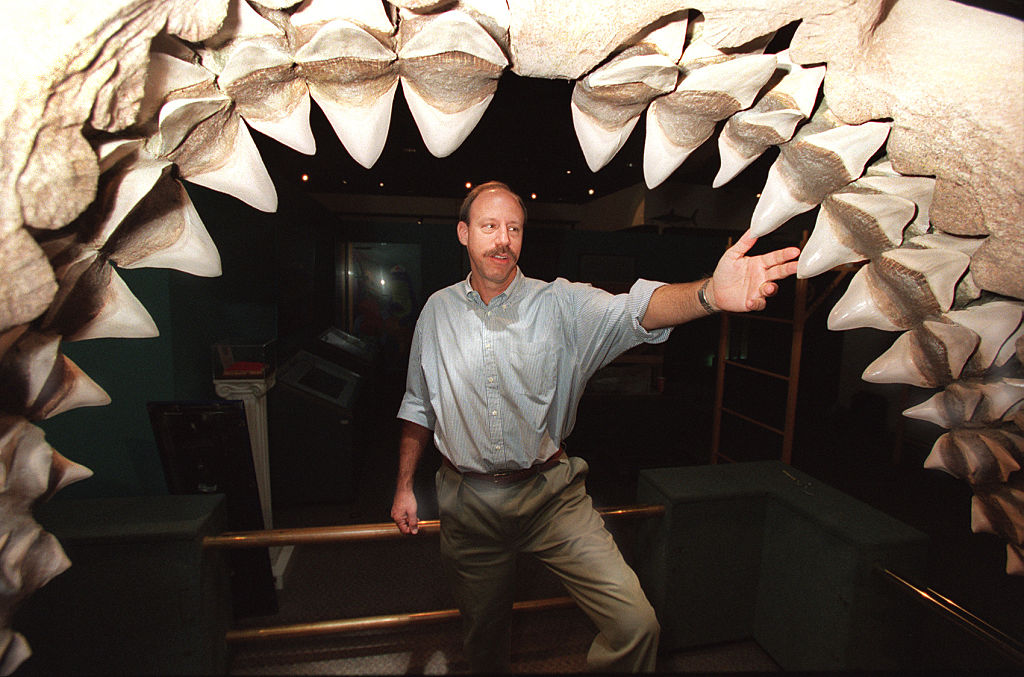From a couple stumbling on a giant megalodon tooth in South Carolina to a diver recovering a razor sharp chomper from the waters of Florida, 2020 has been a good year for Megalodons!
Otherwise known as ‘Otodus megalodon’, the huge prehistoric shark had a starring role in 2018 movie ‘The Meg’. Despite existing million of years ago, the fascinating and fearsome creature is still making its presence felt today.
Couple, Jessica and Simon Owens went looking for shark teeth on the muddy banks of the Stono River SC, southwest of the city of Charleston. After a reported 10 minutes of exploration they found what they were looking for… and it proved more than they bargained for to boot!
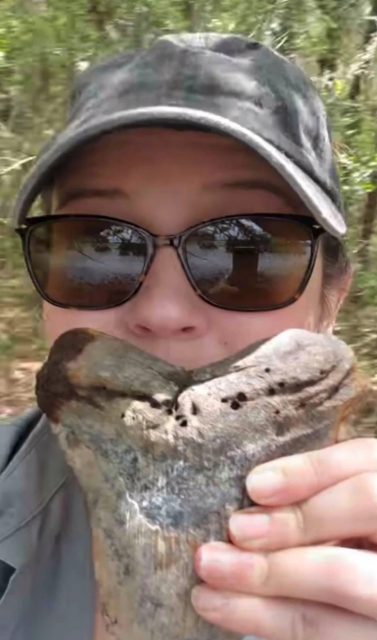
Measuring just under 6 in – longer than the hands they used to pick it up – and weighing approx 1 lbs, the muck-caked Meg tooth was a Jaws-sized surprise. Visible from the river, it practically gave them a wave by all accounts.
According to the New York Post Jessica asked Simon to fire up the camera so they could capture the unbelievable moment for an incredulous public. And in true 21st century style the discovery was uploaded to Facebook.
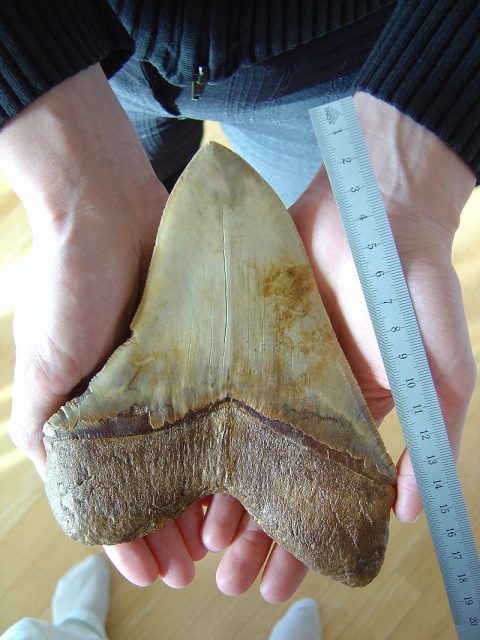
Mace Brown Museum in Charleston confirmed the tooth as being from the Pliocene era. This makes it anywhere up to 5 million years old.
The Megalodon is far more than just a movie monster, though it’s often compared to the famous Great White of ‘Jaws’. It even makes a cameo appearance of sorts in Spielberg’s blockbuster. A classic photo is glimpsed in a book during one scene – it shows a group of men framed by an epic prehistoric mouth.
While South Carolina isn’t the first place someone thinks of when it comes to killer sharks, it would have been a strong stalking ground for the Meg. The coastline used to be submerged, allowing access for many a marine predator. The Museum goes so far as to call Charleston “the megalodon capital of the world!”
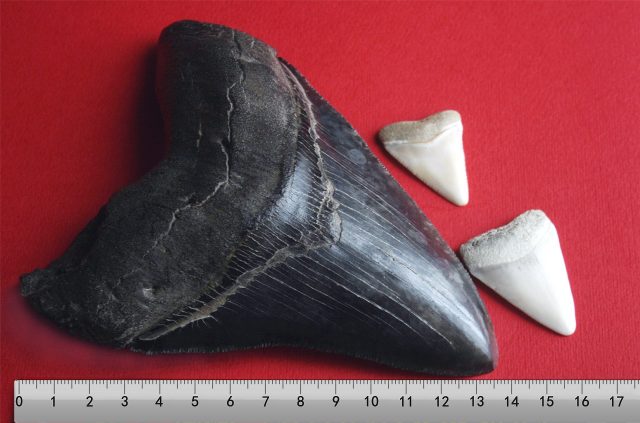
The state is a hotspot for fossil hunters. As recently as 2018 a mammoth skeleton was reportedly found in Beaufort SC. One John Taylor claimed responsibility according to the Mail, though he hasn’t said where the specimen actually lies.
Where is the tooth now? In far less dangerous territory… the couple’s home. Quoted by the New York Post in an e-mail to McClatchy, Jessica writes: “it’s mind-boggling that we now have a fossil on our mantel that is 3-5 million years old.”
Fast forward to this month, and an underwater explorer in Florida had his own brush with the Meg. Thankfully not a living one but another incredible dental discovery!
9 News Australia – a country that’s no stranger to sharks itself – covered the experience of diver Mike Nastasio, who runs Meg-seeking tours in the Venice area. His find was around five and a half inches and made headlines due to it being amongst the largest located in Gulf Coast waters to date.
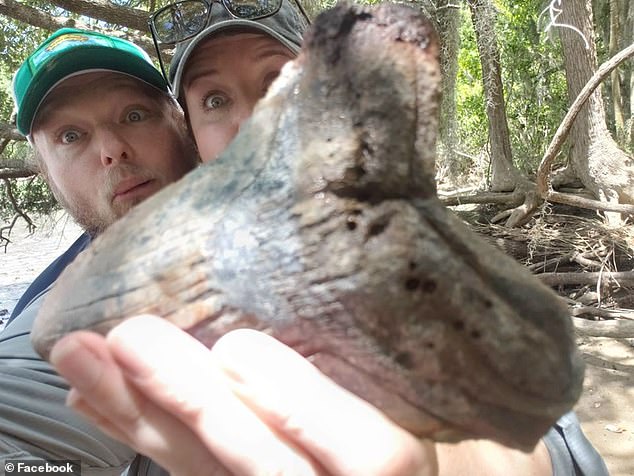
Following the Owens’ example, Nastasio logged onto Facebook so everyone could see what he’d uncovered. The lucky diver was so stunned he needed to come up for air. “I could not catch my breath after snatching it up” he reveals.
‘The Meg’ as depicted on the big screen is a threat of eye-watering proportions. How big was the actual monster? Figures approaching 60 ft are bandied about, though the reality appears to be a little smaller.
This year a team led by paleobiology professor Kenshu Shimada published a study on the Meg’s actual size (in the Historical Biology journal). As reported by Inverse, they focused on lamniforme sharks, or mackerel sharks. These are connected to Megalodon through ancestry.
Zeroing in on size and distribution among 21st century lamniforme sharks, Prof Shimada and co concluded the Meg reached a length of 50 ft. No short order – it would have been a reported 23 ft longer than its nearest predatory competitor! For Shimada the shark is “uniquely gigantic”.
Living creatures aside, no-one would know about the Meg were it not for awe-inspiring fossils of the type found today. Shimada comments on the fossils’ preservation of ancient life cycles. He states they are “critical to today’s oceans for issues like conservation of organisms, habitat preservation, and sustainable marine natural resources”.
Another Article From Us: Incredible – McDonald’s Opens Restaurant Which Includes an Ancient Roman Road
The Meg may have munched its way through various life forms while in existence. Now it’s extinct, the super predator is providing vital clues on how life found a way millions of years ago…
